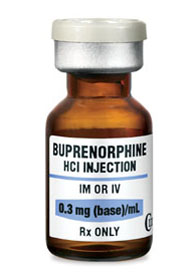Unlike the naturally occurring narcotics such as morphine which are derived from the poppy plant and do not require synthetic changes in a laboratory setting, synthetic narcotics are produced entirely within a lab and are not actually made from the opium poppy at all. Although these drugs may not come from the same naturally occurring plant as non-synthetic narcotics, they are equally as dangerous and can cause extreme physical dependence, addiction, overdose and even death.
Various drugs fall within the realm of synthetic narcotics including many which are produced for medical purposes such as Darvon & Fentanyl, two medications used for the treatment of pain. Synthetic narcotics were once thought to be less addictive and less dangerous than standard opiate narcotics but today, they are being blamed for a number of drug overdoses many of which have resulted in death.
One of the biggest dangers of synthetic narcotics is the risks associated with mixing them with other narcotics. For instance, mixing heroin and Fentanyl is likely to have potentially fatal consequences. People who choose to use drugs, and to mix narcotics with synthetics have a greater risk of suffering from overdose simply because they do not know the strength of the drugs they are taking until they have already taken a lethal or potentially lethal dose.
Demerol, a synthetic narcotic that is similar to morphine, has been found to have some dangers of its own. When users have produced similar substitutes of Demerol there has been found a potential for the destruction of the same neurons that are damaged when an individual suffers from Parkinson’s Disease. Various clandestine products that mimic Demerol have been synthesized and many users have faced the irreversible damage caused by these drugs.
Dextropropoxyphene is another synthetic narcotic that is highly dangerous. In fact, this drug, which mimics the effects of methadone, is said to be one of the top ten drugs associated with overdose death. The DEA considers this drug a Schedule II Narcotic which means it has a wide potential for abuse and for causing physical dependence. Though a mild pain reliever, this medication is prescribed more than 25 million times annually.
A highly dangerous synthetic narcotic that has caused thousands of overdose deaths and resulted in many hazardous complications and consequences for drug abusers is Fentanyl. The drug is available in a transdermal patch as well as a stick that dissolves in the mouth. This drug is said to be as much as ten thousand times more potent than morphine and has a very wide potential for abuse which can lead to dangerous consequences.
References:
http://www.drugabuse.gov/drugs-abuse/fentanyl
Most of the time, the term narcotics refers to opiates or opioid painkillers that are available through prescription from a doctor but the term can also refer to other drugs such as marijuana, cocaine or methamphetamine. Various narcotics addiction treatment options exist to assist those who become hopelessly addicted to drug to get the help and support that they need to overcome the perils of addiction and live a sober lifestyle. Some of the most common options for narcotics addiction treatment include:
- Medications
- Cognitive Behavioral Therapy
- Family Therapy
- Contingency Management
- Counseling
Narcotics addiction is a complex issue that affects millions of people. The addiction will literally consume an individual’s life taking over everything including his or her health, actions, thought processes and lifestyle. The behaviors of an individual addicted to painkillers or other narcotics are typically high risk, high trouble and highly disputable.
Medication Based Treatments

Narcotics addiction treatment can help you!
Many people who become addicted to narcotics choose not to seek help for their addiction primarily because they are afraid of the withdrawal symptoms that will come during detox and the early phases of treatment. Many medication based treatments are available to assist those who are addicted to narcotics in surpassing the phase of detox with minimal withdrawal symptoms. There are even medication replacement programs such as those which use Suboxone or methadone to replace the opiates and reduce the addiction symptoms associated with an opiate or opioid dependence problem.
The most common medications used in narcotics addiction treatment include:
- Methadone
- Buprenorphine
- Naltrexone
- Suboxone
Cognitive Behavioral Therapy
Many different behavioral therapy options exist in the treatment of narcotics addiction. One of the most common methods of behavioral therapy is cognitive behavioral therapy (CBT) which works to change the behaviors of the patient through helping them learn how to recognize, avoid and cope with situations that are likely to result in them using drugs. This method of therapy is also widely used in other forms of treatment such as the treatment of compulsive disorders such as OCD.
Family Therapy
Many people who are addicted to narcotics have caused great harm or pain to their family members and loved ones as a result of their addiction. While there are many narcotics addiction treatment options available to assist those who require support, family therapy is reserved for the loved ones and the addict to come together and get counseling and support for the tragedy and pain that addiction has caused. Family therapy is very important because it provides a healing process for the entire family system and not just the addict him or herself.
Contingency Management
Also called motivational incentives, contingency management is one of the options of narcotics addiction treatment that focuses on providing positive reinforcement to recovering addicts when they do well. The primary purpose here is to reward positive behaviors related to abstinence from narcotics abuse. The individual may receive a reward such as a restaurant voucher, free day from treatment or some other reward that they would appreciate for things such as staying sober for a set number of days, reducing an opiate replacement medication to a specific point or reaching other goals in recovery.
Counseling
Various methods of counseling are provided to patients who suffer from narcotics addiction including individual and group counseling methods. Most people undergo a series of counseling programs when they suffer from substance abuse problems such as an addiction to opiates or prescription painkillers. The counseling is typically diverse and includes educational sessions, talk therapy, and group sessions that all work to help the user better understand the addiction, work through treatment and find their way in recovery.
Resources:
http://www.drugabuse.gov/publications/drugfacts/treatment-approaches-drug-addiction
Narcotics addiction is a potentially deadly disease that often requires more than just counseling and therapy to treat. Many narcotics such as opiates or opioid based pain medications are highly addictive physically and are best treated using various medications in combination with counseling and therapy.
The most common medications used in narcotics addiction treatment include:
- Methadone
- LAAM
- Buprenorphine
- Naloxone
- Naltrexone

There are a variety of medicines to help you through narcotics addiction treatment.
The most frequently used medications today in the treatment of narcotics addiction include methadone, Naloxone and Buprenorphine. The drugs Naloxone and Buprenorphine are also marketed under the brand names Suboxone and Subutex.
While LAAM, an oral solution that was FDA approved in 1993 was once widely used in narcotics addiction treatment, the drug is not used in the treatment industry today as it was found to cause increased risk of cardiac arrhythmia in some patients. In 2004, the maker of LAAM announced that it would no longer produce the drug and as the current stocks of the drug were used up this medication in addiction treatment eventually would become obsolete and completely unavailable.
Buprenorphine is a medications that is a partial mu opioid agonist which can be administered in a doctor’s office, outpatient treatment program or similar health care setting. This medication is sometimes marketed under the brand name SUbutex and it is typically in the form of a sublingual tablet. Approved in 2002 by the FDA, Buprenorphine is widely used in medically supervised withdrawal treatment as well as opiate addiction maintenance treatment.
Suboxone is another commonly used medication in narcotics addiction treatment that is relatively new to the treatment industry. This medication combines a mixture of Naloxone and Buprenorphine to help control cravings and prevent pleasurable effects of using various narcotics especially opiates such as heroin or prescription painkillers. This medication was approved for use by the FDA in 2002 and continues to pick up market share being widely used in the outpatient treatment of substance abuse.
Another medication that is sometimes used to treat narcotics addiction is called Naltrexone. This drug is available in an oral tablet and has been widely used in the substance abuse treatment industry since the mid-1980s. Naltrexone is a Mu opioid antagonist which stops the effects of opiates such as heroin, morphine or other narcotics and does not produce withdrawal symptoms nor does it have a potential for abusive use which makes it a widely acceptable medication in narcotics addiction treatment.
Resources:

